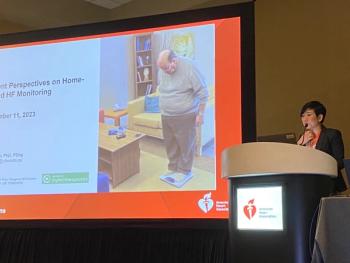
Specialty physician involvement in P4P can enable programs to thrive
PAY-FOR-PERFORMANCE (P4P) contracting has introduced the concept of value purchasing by payers.
PAY-FOR-PERFORMANCE (P4P) contracting has introduced the concept of value purchasing by payers.
Because P4P programs still are relatively new, the systems used to recognize, measure and pay for differential quality are rudimentary. When P4P programs have found their way into contracts, they have typically been structured to incent hospitals or primary care physicians (PCPs) to improve quality, and they have been based on established measures such as JCAHO core measures or HEDIS metrics.
In addition, P4P programs in many markets have primarily focused on incentive payments if quality metrics are met rather than revenue reductions if they are not. The programs also typically account for only a small fraction of the overall payments that physicians or hospitals receive.
WHY INVOLVE SPECIALISTS IN P4P?
If payers, including CMS, want to have an impact on quality and healthcare spending, they need to involve a larger percentage of providers. Although PCPs are the focus of P4P programs, they account for less than one-third of all physicians and for only 20% to 30% of physician expenditures.
Further, specialists control more healthcare spending because they are more involved in high-ticket items such as hospital care, high-cost drugs and high-tech devices.
Therefore, designing P4P programs to include speciality physicians will ultimately have a bigger impact on the quality and cost of care.
BARRIERS IN P4P PROGRAMS
Why has the industry not yet evolved to the point of including specialists in their P4P programs? One answer may be the reluctance of specialists to allow these programs in their contracts, primarily because of the challenge of accurately and efficiently measuring quality care in this arena. Specialists deal with a more focused patient population, and the numbers needed for statistical validation may be a barrier when trying to compare performance in a narrowly defined area. In addition, there's the problem of few, if any, valid baseline measurements.
Another barrier to more widespread adoption of P4P programs for specialists-and a problem for providers and payers-is the potentially high administrative cost of obtaining the data required to adjudicate programs focused on smaller, highly specified populations.
Moreover, measurements among small populations may require severity-of-illness risk adjustment, which is methodologically challenging in these populations and requires additional resources. The smaller the number of patients in a given metric, the greater the probability that severity of illness will introduce a confounding variable compromising the measurement and, consequently, the physician's confidence in the program. Therefore, such adjustments may be necessary to permit measurements that are based on true differences in care rather than the influence of differences in the severity of illness of an individual physician's patient population.
A final barrier can be traced to physicians' skepticism that these programs are simply a new tool to reduce physician payments rather than an effective means to truly value and improve quality. Different physician groups start with different baseline quality performances. Thus, one size will not fit all. Some believe that P4P programs should reward providers who already are delivering higher quality care by adjusting baseline reimbursements before adding additional measures for quality improvement. For providers with low-baseline performance, a pure upside reward program may be a more appropriate starting place.
To prepare for these changes, more and more physician specialty groups are setting their own quality goals, and CMS has initiated a number of demonstration projects covering specialty practices, including cardiologists and oncologists.
Recently in Massachusetts, a physician group with a high concentration of surgeons was successful in negotiating specialist-based quality measures into its contract. This gave the specialists an opportunity to improve their revenue by achieving performance metrics relevant to their practices and, therefore, under their control. The group already was measuring key indicators of quality, including administration of prophylactic antibiotics and rates of surgical infections, and understood that adherence to relevant guidelines has a dramatic impact on quality of care, patient functionality and the cost of care. The measures were introduced into a P4P contract for the physicians as a starting point for introducing specialty quality measures into their reimbursement.
Newsletter
Get the latest industry news, event updates, and more from Managed healthcare Executive.






















































